Holyoke Newsboys.
By M.A. Ryan
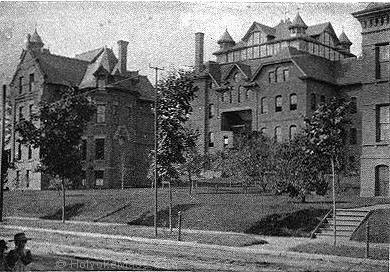
Sacred Heart Convent & School.
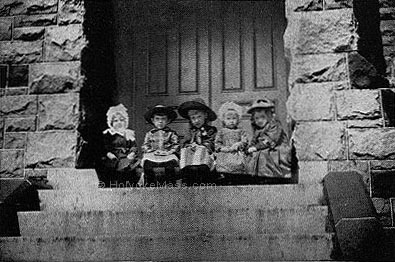
Waiting for Sunday School to Begin.
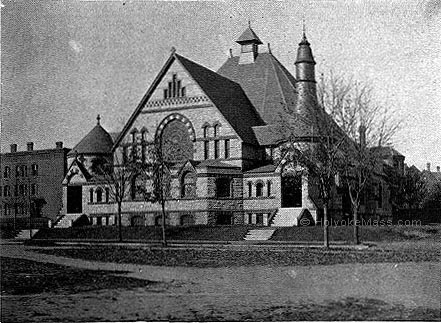
Presbyterian Church.
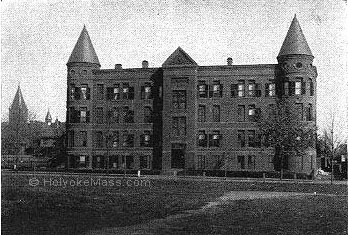
The Massasoit.
|
Being a newsboy is being one chapter of the world’s boyhood. It is being a very busy chapter, and a very bright and quite an important one.
The world knows well enough that the ways of newspaper making are many, and the newsboy knows that so, too, are the ways of selling the printed sheets. He knows that in the same numbers he measures his success, so does the paper that he sells. From this comes a sense of possession, and if the makers of "our paper" only will give something that will suit, he will see that the people take it.
In newboydom there is a constant pushing evolution. But it is an evolution that takes the boy out of the news ranks and makes him errand boy, or clerk, or steady worker of some kind. Within the ranks boys may come and boys may go, but the newsboy is always the same. Those who sell the Holyoke afternoon papers are like the rest of their motley kind. Perhaps they do not have to rush and hurry as when morning editions must be spread around before breakfast time, and if anything, they may be a degree brighter and a little sharper at business deals than elsewhere. As financiers they are great successes, and there is no limit to the tricks they will think of and practice in their line.
The paper will go to press at four o’clock, but the boy is on hand early and begins to hang around by two o’clock, or, if school keeps, he comes as soon as he is loose. His aim is to "get out early," for he has customers in whom he takes as much pride as does his senior in business in his patrons, and those customers want the news as soon as it can be got on paper. Besides there is a chance to do extra business for the boy who gets his news first. He can run from one corner to another and catch the street farer, while the other fellow is still waiting noisily in the press-room for his packet of papers. It is hard to say what the boys do during their two-hours’ wait. No boy with full health was ever known to be still for two hours, and much less could be expected of the two hundred of them in front of the railing that keeps the crowd from the big press. A rushing, pushing, grasping, yelling crowd it is.
It is the same crowd getting together every day, and the same uncongenial spirits displaying themselves. Sometimes a sparring match is needed to cement friendship, and nearly every day the same sparers are settling the same grievance or making fast the same compact. There is a code for these matches. Fighting space is cleared in the crowd, and each sparer has his siders. A little fellow steps just a trifle out to umpire the fun, and makes brisk music with a jews-harp or a harmonica. The ready strugglers go at it, and fist and push and parry until someone is worsted. Then quarter is called, the music stops, and the beaten boy promises to do the licking next time.
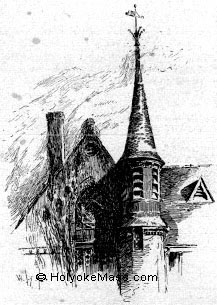
A Tower — Church of the Unity
|
There is a deal of chivalry shown in that noisy crowd. The little fellow fares better than some, because his back is not straight and strong like other boys’. And this other little fellow is very young.
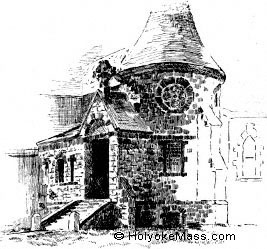
An Entrance — Presbyterian Church
|
Boys of all sorts are in the crowd. There is the harum-scarum little fellow who sells ten or a dozen papers in a hotel corridor or on a busy corner, the more regular one who sells only to his customers, and the big boy who has been long in the business and takes some hundreds, delivering them over the same course that he has for the past half-dozen years. The boys have a yell all their own, which they originate and shortly forget, but start again in some new form. It is generally in sound much like the class yells of college boys, only less complicated.
© Laurel O’Donnell 1996 - 2006, all rights reserved
This document may be downloaded for personal non-commercial use only
and may not be reproduced or distributed without permission in any format.
This is an edited adaptation from the original publication.
|